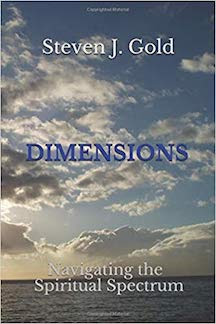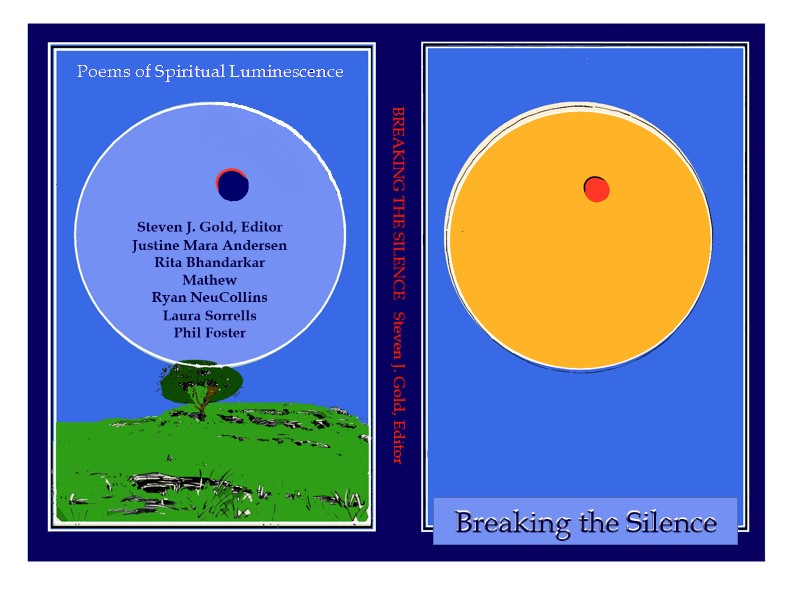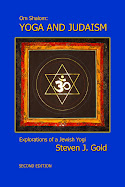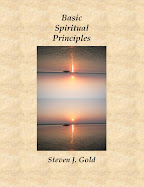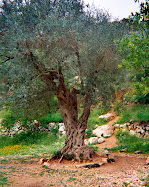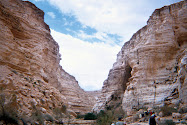Bibliography/Book Review;
Kaplan, Aryeh. The Living Torah; Jewish Meditation, A Practical Guide; Sefer Yetzirah, The Book of Creation, In Theory and Practice; The Bahir Illumination; Meditation and the Bible; Meditation and Kabbalah.
Rabbi Aryeh Kaplan, ingrained in Orthodox Jewish practice and tradition, was nevertheless a pioneer and maverick who endured some controversy and criticism from within Orthodox circles. This was due to his being perhaps the earliest of modern Jewish teachers and writers to reveal to the general public aspects of traditional Jewish Meditation practices and related mystical teachings that had long been kept concealed within the province of secretive Kabalistic learning circles. His early works were the first cracking open of the floodgates that have since followed, resulting in the current glut of teachers and books on these subjects. He authored an incredible amount of thoroughly detailed and researched material in his relatively short life span. His writings are not as easily accessible to the casual reader as some other modern day authors on these subjects who followed him, such as Joseph Gelberman, Zalman Schacter-Shalomi, David Cooper, Arthur Green. He tends to be more on the dry, scholastic, academic side, although not quite as dense as the normal style of college professors or PhD candidates writing for scholastic journals or dissertations. This is because his scholasticism is obviously infused with the depths of personal experience, so his writings possess a potency that is lacking in mere intellectual exercises. But if you can stick with his writing and presentation style and wade through it a bit, you can be richly rewarded.
The Living Torah is his annotated translation of the Five Books of Moses and the related Haftorah portions. I have found that for any serious study of the Torah, particularly for those of us who know little biblical Hebrew and are relying on translations, it is important to compare at least two annotated translations. It is impossible for any translator to convey all of the nuances of meaning contained in the Hebrew, or the many “read-between-the-lines” extrapolations of meaning that have developed in the Talmud and other sources. Translators are constantly making difficult choices of what words to use in the primary text translation, and how extensive the annotations should be to provide alternatives and further elaboration and opinions. Anyone who reads only the main text of any translation without some supplementation via annotations or commentaries is barely scratching the surface of the rich texture of meaning and nuance. The primary text is almost like just a very brief outline or summary. There is no question that the choices translators make are influenced by their own prejudices, agendas and slants, and thus the need for reading more than one annotated translation. Kaplan’s version has gained a great deal of respect among many Jewish circles, and he honestly points out in his annotations many alternatives to what he selected for his primary translation. Many of his annotations are very brief, although he occasionally goes into great and intricate detail on some subjects.
-->
Jewish Meditation, A Practical Guide is one of the ground-breaking works I mentioned above. He had earlier written Meditation and the Bible and Meditation and Kabbalah, both of which are on my “to do” list. In his introduction to Jewish Meditation, he admitted that the earlier works were not accessible for practical application for those not already familiar with basic theory and practice. Thus he wrote Jewish Meditation, A Practical Guide in response to a need for such a manual, and thus my reason to read it first and put the other books on this subject on the back burner. I will merely here add to the chorus of many others who highly recommend this work for anyone interested in meditation generally, and in Jewish meditation specifically.
As indicated, the above was written from memory, having initially read this book several years ago, and before I read Meditation and the Bible and Meditation and Kabbalah. After reading them, I felt it worthwhile to go back and review Jewish Meditation, A Practical Guide, to see how Kaplan incorporated the principles from the earlier works into his more practice-based volume. I can now therefore provide a more detailed summary from this recent, fresh re-reading, which I believe is worthwhile because of the importance of these three books in framing the Jewish meditation movements that followed after them.
From the perspective provided to me by my background in the raja yoga and Vedanta systems, it was very interesting to once again become acquainted with Kaplan’s approach. He begins with introductory chapters about the usefulness and purpose for meditation techniques comparable to what is found in many meditation manuals. His definition of meditation is very broad, including many different practices which other traditions, including my yoga tradition, would call by other names, such as concentration and contemplation. He acknowledges that there are different Hebrew terms for these various forms in order to distinguish them. But his basic definition is “Meditation consists of thinking in a controlled manner. It is deciding exactly how one wishes to direct the mind for a period of time, and then doing it…Meditation is thought directed by will.” This is actually a little disappointing to me, because for me, the core of meditation is about non-doing, of locating that place of quiet mind that already exists within us, sitting/bathing in it, which elicits a heightened state of receptivity, and allowing whatever comes to unfold and be received from sources beyond the mind. This is consistent with the definition of the word “kabalah” meaning “receiving”. Kaplan does acknowledge this as an advanced form which focuses on “nonthought” or on nothingness. As he states in Meditation and Kabbalah, he repeats that “this form of meditation can be dangerous and should not be attempted without a practiced guide or master”. For me, the other forms that he describes as structured and directed contain the most potency when initiated after the quiet mind state is engaged, not before, as he seems to advocate. The remainder of the book reviews various practices — structured, unstructured, directed, undirected — which he gleaned from the research contained in his earlier books, which he deems relatively safe, although there are still warnings against engaging in some practices without guidance and without knowing how to re-engage into a balanced mental state of functioning in normal worldly activities. He tries to distinguish Jewish techniques from others, and there is no question that there is a great variety of practices within the Jewish tradition (almost a dizzying variety), some which may be unique and particular to Judaism, but for many practices, the similarities to descriptions from other traditions is inescapable. This includes a mantra practice like in yoga, utilizing Hebrew phrases instead of Sanskrit, which is my preferred Jewish meditation technique. Certainly, what is unique to Jewish practices is engaging Hebrew phrases and Jewish scriptures and sources, but other traditions similarly engage phrases from their chosen sacred languages and scriptures. He is very insistent on maintaining that although there may be similarities between Jewish and non-Jewish meditation practices, and that “all forms have characteristics in common”, that “does not imply any special relationship between [them]” or that one is derived from the other. This reflects, in part, a concept of what I call “similar independent revelation”, but it strives to deny, somewhat unconvincingly, that similarities exist because they derive from a common source, ascribing them to something more like insignificant coincidence. However, he elsewhere acknowledges that there was a significant interplay and mutual influencing between Jewish sages and mystics from other traditions, including Christians, Sufis and Indians.
The chapter on contemplation contains a few interesting subjects. One is an analysis of various levels of meaning and significance to the Tetragrammaton that I found very interesting. It describes the Yod in terms similar to the concept of “bindu” in yoga: the point of origination of everything. This beginning point Yod becomes encapsulated into the first Heh, entering through the top opening, and emerging through the bottom opening as the Vav, because it has gestated into this form of the Vav, which is an elongated Yod. This also brings forth images of a lingam from the yoga descriptions, and is consistent with Kaplan alternately describing the two Heh’s as hands that contain the Yod and the Vav, or as wombs containing them. The second Heh is then impregnated with the Vav, and brings forth the physical world as we know it. This corresponds to other conceptions that the four letters correspond with the four worlds, culminating in the lowest world of physical manifestation.
The other subject that I found interesting in the chapter on contemplation concerned contemplating on a flame. In his other books, Kaplan cited references that were all over the place concerning the colors of a flame and their significance, some that seemed contrary to descriptions found in other traditions. However, in this book, the references he cites are a bit more consistent, but nevertheless quite perplexing in some respects. He states that the sources state there are five basic colors to the flame of a candle or oil lamp: white, yellow, red, black and sky-blue. He maintains that it is easy enough to perceive the white, yellow and red, but the black and the blue are much more problematic, because they do not appear in a common candle flame. He states that the black refers to darkness around the flame, and the blue appears only on an inner mystical level outside the black. I recently gazed fairly closely at a candle flame, and repeated this exercise again to confirm my earlier memory. Contrary to Kaplan’s assertion, I found a definite, but small, sky-blue color at the base of the flame (sort of like an upside-down cap to the flame), which then gave way to an inner tongue of dark/black that started a little below the upper tip of the glowing orange wick (my wife said it looked more purple to her). This black tongue was enveloped in a bright yellow tongue, and on the most external layer, there was a less bright yellow tongue. There was a distinct line of demarcation between the two yellow tongues. I did not see white or red, other than the glowing orange tip of the wick. I was also curious about the relationship between flame color and temperature. A quick little internet research revealed many layers of complexity to this question, but the simple answer concerning the candle is that the blue is the hottest, and it gets less hot from there. Kaplan goes into some detail about the profound significance to the inner-manifested blue aura around the candle, as it signifies the blue sapphire of the Throne of Glory and is also associated with the “third eye” of prophetic insight and vision. He provides a poetic description: “It will be the most beautiful sky-blue color imaginable, like that of a summer sky over the Holy Land. The color will have an almost awesome beauty”. He then follows this with some contradictory statements, which nevertheless are quite profound: “Of course, the blue color is not a physical reality, it is entirely a creation of the mind. But according to the Zohar, the blue sensation is a revelation of the spiritual. In a sense, it denotes that one is seeing the spiritual essence of the light that is radiating from the candle. There are sources that indicate that in more advanced meditative techniques it is possible actually to see visions in this blue field. Furthermore, in conjunction with the revelation at Sinai, when the Israelites had a vision of the Divine, the saw ‘under His feet like a brickwork of sapphire’. Similarly, when the prophet Exekiel saw the Throne of Glory, he described it as being the color of sapphire. Thus blue is always a color associated with vision and prophecy.” So he begins by stating it is a creation of mind, but then proceeds to explain that it is something much more than a creation of mind. This is an issue I found running throughout this book because of his definition of meditation as a method of directing the mind through will. But he seems to also be recognizing that at some point, this willful manipulation of the mind gives way to visions not created by the mind, but rather revealed to the mind from a source beyond mind. My intuition is that this blue is the color of the primordial flame of the burning bush, known as “agni” in yoga, and explains why many Hindu images are depicted in this color, such as Krishna and Shiva.
I have also been very interested in a notion I have found only from Kaplan about the black/dark flame, the lamp of darkness. It is very interesting to me that at the heart of the candle flame, above the blue foundation, first appears an inner core of dark/black. The yellow tongues are outside of that. Although it is a very different perception than what Kaplan describes, it is nevertheless there. Conduct your own experiment and see what you see!
There is a chapter on visualization followed by a chapter on nothingness, in which Kaplan persists in describing techniques by which the mind is actively engaged in fostering up images and conceptions, even that of nothingness, instead of encouraging a mode of inner receptivity by which one looks to receive images and a sense of nothingness originating from the Divine source within and beyond the mind. For me, meditation is not about manipulating the mind, but rather quieting the mind, which enables discovery of states of consciousness beyond the mind. Imagining Divine Light or Divine Sound through a visualization/fabrication of the mind is not the same as experiencing Divine Light or Divine Sound coming forth on their own accord as an inner revelation. Kaplan, however, warns against “spurious visions” that might come forward into the mind of a novice meditator. It is certainly important to guard against images and “visions” that are mere inner emotional churning machinations of an agitated mind stirred up by the meditative process, as distinct from real revelation, but there are criteria to distinguish between the two. Real revelation is not accompanied by an emotional charge, but is rather quite dispassionate and matter-of-fact in its appearance. Kaplan cites some sources that recommend banishing spurious visions, and replacing them with the Tetragrammaton, although later in the book, he states that the Baal Shem Tov encouraged an inspection of them. This is consistent with the suggestion of my spiritual master, Swami Rama, that it is an important process of self-therapeutic meditation to allow such images and thoughts to arise without getting emotionally involved with them or acting upon them. He suggests a process whereby a beginner just “lets them go” (at a stage when they are moving and changing rapidly), an intermediate “observes” them (at a stage when the chattering of the mind-stream has slowed down a bit), and an advanced practitioner “inspects” them from all angles (at a stage when thoughts/images/emotions arise at a much slower pace, allowing for this thorough inspection. This is a valuable inner process of self-cleansing and inner purifying heat that will eventually burn up these limiting obstructions and clear the way to deeper states of meditation, when the lower chattering mind gives way to the higher quiet mind. Swami Rama exhorts against attempting to suppress such rising thoughts, suggested by the “banishing” described by Kaplan, but offers an alternative method somewhat similar to Kaplan’s suggestion of replacing those visions with that of the Tetragrammaton: giving the mind a positive alternative productive thought to contemplate, being either a mantra or positive visual image. Another alternative method suggested by Swami Rama is to visualize an inner fire altar located above the third eye and direct all unwanted obstructive thought patterns to be burned/sacrificed at that altar. This is similar to an internal practice mirroring the sacrificial offerings described in the Torah performed by the High Priests of the Temple in the external world, burning up the lower animal nature on the altar.
He devotes a chapter to “Conversing with God”, focusing on the technique prescribed by Rabbi Nachman of Breslov, discussed in Meditation and Kabalah. He then launches into two related chapters, “The Way of Prayer” and “Relating to God”, focusing on the central prayer of the Amidah as not only a prayer, but as a meditation device/long mantra. He goes into some detail about the history and deep meaning to the Amidah, and methods to recite it in a meditative fashion, all of which is very fascinating. He quite curiously concludes with a discussion of kundalini yoga in the context of the directions of bowing and raising up in reciting the Amidah. He relates the 18/19 blessings of the Amidah/Shemoneh Esrey as corresponding to the vertebrae of the spine, and that the bowing and rising up is an exercise intended to activate the spine and the kundalini energy associated with it. He distinguishes the Jewish approach from the yoga approach, stating that while the yoga approach focuses on stimulating the ascending energy rising from the base of the spine upward, the Jewish approach focuses on the descending energy coursing down from the mind/head through the spine to energize the body, or more precisely, that the head is bowed down to the body so that the spiritual energy from the head is employed to activate the lower kundalini energy to spur its rise up the spine. Serpent power only energized from below upward is depicted negatively, resulting in the serpent power of the rigid spine reigning supreme in the yoga tradition, while serpent power energized by the head first in the Jewish practice renders the serpent power subservient to the head, and thus acceptable. I have addressed issues concerning these concepts elsewhere, most specifically in a piece entitled “Schechinah, Rise of the Feminine” available on the Yoga and Judaism blog, and also in the book IVRI: The Essence of Hebrew Spirituality, and I will not repeat them at length here. In short, I agree with the caution that efforts at raising the kundalini from below should be tempered by or taken in context with the concept of the descending energy of grace coming from above. However, I disagree with the traditional Jewish take on the serpent repeated by Kaplan that “the serpent is seen as the enemy of mankind. The serpent is the tempter, who tries to use sexual energy to draw humans away from God”. But even Kaplan admits that the Jewish sources use the serpent image in a positive context if the Jewish practice is engaged, that after bowing down and infusing the body with spiritual energy, we “can rise and lift energy from the spine to the head, ‘rising like a snake’” [quoting from the Talmud. The primordial serpent power/Shakti/Schechina is the source of both the Good Inclination and the Evil Inclination. Without it, humans would not exist to be tempted! In this discussion, Kaplan is careful to repeat the proviso: “This is not to suggest that there is any relationship between the Jewish teaching and that of the East, but merely to point out that the spine is universally recognized as an important conduit of energy”. Duly noted!
The Chapter on Unification is devoted to an examination of the Shema prayer, as its message is the message of Oneness. Although in my own personal practice, I utilize the Shema in a rapid repetition mantra method, Kaplan states the Talmud discourages such a practice, stating that “one who repeats the Shema should be silenced”. However, I utilize it in silent internal mode, so there is nothing external to be silenced, so perhaps I am okay with it. I find it to be a powerful practice. Kaplan’s recommendation is the exact opposite, to repeat the Shema very slowly in a meditative practice. He notes the similarity between the word, “Shema” consisting of Shin, Mem and Ayin, and the words “Shem” meaning “name” and “Sham” meaning “there”, both consisting of Shin and Mem, with no Ayin. He notes that the Sefer Yetzirah identifies three “mother letters”, Shin, Mem and Aleph, with Shin designating chaos and fire, Mem designating harmony and water, and Aleph designating the silence at the foundation of all sound. He describes a simple meditation technique contained in commentaries on the Sefer Yetzirah whereby the “Sh” sound is internally intoned on an outbreath, followed by the silence of Aleph on the inbreath, followed by the “M” sound on the next outbreath, and repeating that sequence. He states that the Ayin in the word Shema designates diversity within unity.
“It is easy to understand why the shin and mem are important. The shin has the sound of s or sh, and hence, of all the letters in the alphabet, it has the sound closest to white noise. White noise is sound that contains every possible wavelength, and is usually heard as a hissing sound. On an oscilloscope, the s sound would appear as a totally chaotic jumble with no structure whatsoever.”
“The opposite of white noise is pure harmonic sound. This is a hum, like the sound of a tuning fork. On an oscilloscope, this would appear as a perfect wavy line, the epitome of order and regularity. This is the sound of the mem.”
“The shin thus represents chaos, while the mem represents harmony. The Sefer Yetzirah says that the shin represents fire, while the mem represents water. The shin denotes a hot, chaotic state of consciousness, while the mem denotes a cool, harmonic state. This is significant, since in many meditative traditions, the m sound is seen as one that leads to tranquility and inner peace. The sound itself seems to be conducive to the harmony that one seeks in the meditative state. The s or sh sound, on the other hand, is more closely associated with our normal, everyday level of consciousness. It is also interesting to note that the ‘still small voice’ (1 Kings 19:12) in which Elijah heard God is translated by the Sefer Yetzirah as a ‘fine humming sound.’ It appears that the m sound was closely associated with prophecy.” Pp 129, 130.
The Chapter on The Ladder discusses the vision of Jacob’s Ladder, and how midrash relates that the ladder had four steps, relating to the four letters of the Tetragrammaton, the four worlds, and also to four layers of the soul. He also describes how the sequence in the traditional morning shacharith service guides one through these four levels, starting from the most gross to the most subtle, and then brings one back down to earth to instill the highest consciousness into daily living. He contends that the entire service can therefore be regarded as a meditation.
The Chapters, In All Your Ways, The Commandments, and Between Man and Woman contain a Jewish version of Tantra. They express the concept that every single action can be viewed as sacred and conducted as meditation in action. First, In All Your Ways expresses the idea that God is immanent in all things, so dealing with anything is dealing with God. Second, The Commandments expresses that there are certain activities that have been designated as particularly helpful in providing direction and spiritual guidance in life. And third, Between Man and Woman expresses that proper sexual relations is a particularly unique sacred activity, as it mimics the very act of ongoing creation whereby the interplay between male and female is essential for creating and sustaining anything and everything.
The book ends with a chapter entitled Remolding the Self. As sympathetic as Kaplan appears concerning Chasidism, Jewish Mysticism, and Kabbalah, it is interesting that he ends the book with this chapter discussing the Musar movement, which he says was a reaction to Chasidism. He explains that Chasidism had to a significant extent degenerated into a type of cult worship [my term, not his] of the various designated rebbes whereby “the guide became more important than the mountain. Many Chasidim regarded their rebbe as the paradigm of the saintly man and lived the righteous life vicariously through him. The Musar movement developed among the Mitnaggedim, opponents of the Chasidic movement. Musar schools taught that it was not enough to live the righteous life through a master. Every individual had an obligation to strive to live the righteous life in his own right. Beyond that, the Musar movement offered a program through which every person could gradually perfect himself.” He explains that Musar focuses on one’s relation with one’s fellow beings in addition to one’s relationship with God. Musar means “self-perfection”, and as such, focuses on methods to overcome individual shortcomings in order to be a better citizen of the world. Kaplan contends that the type of introspective Musar “self-help” techniques can be seen as individualized meditations, and that by engaging in these meditations, which are similar to the practice of affirmations found in some non-Jewish movements such as New Thought, the results can be realized. However, unlike a lot of New Thought “Power of Positive Thinking” approaches, in which just glowing positive attributes are emphasized, Musar starts with the practitioner honestly identifying and acknowledging a specific character flaw or weakness, and then identifying and focusing on the flip-side positive attribute to it in order to eliminate the flaw and replace it with its positive counterpart. In concluding the book with this chapter, Kaplan is making the point that the real test of spiritual development is not only in attaining lofty meditational levels, but in how one brings those attainments to bear in one’s interactions with the everyday mundane world and its challenges and relationships, starting first with the family unit, and especially between spouses. Perhaps the greatest testers to our spiritual development that we have are those closest to us, who can challenge us and press our “hot buttons” like no one else. This is the ultimate “reality check”, where “the rubber meets the road”. [The last three phrases in quotes are mine, not Kaplan’s!]
Sefer Yetzirah, The Book of Creation, In Theory and Practice is Kaplan’s translation and extensive commentary on this significant kabalistic text, including its several versions. As discussed above regarding the Torah being just like an outline or summary which requires annotation and commentary to even begin to fully grasp the texture of meaning lying beneath the surface, this holds even more true for the Sefer Yetzirah, which is considered one of the primary texts of kabalistic teaching, along with the Zohar and the Bahir. That is because the primary text is extremely brief and terse, and without extensive elaboration through commentary by someone familiar with and capable of deciphering its short-cut code language and terminology, it is virtually inaccessible to the casual reader. As described in my introduction above, this is Kaplan the scholar and practitioner at his best. It is not a casual or easy read, but for anyone with an interest in the details, even the minutiae, of Jewish mysticism and esoterica, Kaplan is a master at articulating these intricacies.
His book on The Bahir is another on my extensive “to do” list. It looks like a treatment of this text similar to his treatment of the Sefer Yetzirah.
-->
I have now read Meditation and the Bible. It is quite interesting and inspiring. It validates many of the hunches I have had about the authenticity of Jewish meditation practices. He has conducted painstaking research, providing translations from little-known texts never before translated into English. He weaves together references to meditation and meditative states through his analysis of terminology that many scholars before him did not cognize. There is a heavy focus on the biblical Prophets and evidence that they entered meditative states in which they attained their prophetic revelations. He also refers to two hatha yoga-like prophetic postures, both of which are most likely variations on the child pose. There is also a focus on the Psalms as either tools for entering meditative states, or as descriptions of experienced meditative states. There is a particular focus on the 119th Psalm, which curiously is organized in groupings of eight verses marked by each letter of the Hebrew alphabet per grouping. He points out that this particular Psalm contains a high number of references to words that relate to various forms of meditative states or techniques.
-->
I have also now read Meditation and Kabbalah. It picks up where Meditation and the Bible leaves off, venturing into other sources of Jewish meditative practices over the centuries. It opens with an overview and then presents a review of various sources, beginning with the Talmudists, the Zohar and The Hekhalot. There is a lengthy section on Rabbi Abraham Abulafia, who was born in 13th century Spain, documenting his approach and the extensive influence he had on his contemporaries and in subsequent years after his passing, particularly in the Mediterranean and the Holy Land. Abulafia wrote extensively and in great detail, to the dismay of many others opposed to him and his actions, some because they believed such matters were heresy, and others who believed such matters should remain the province of secret groups. Abulafia’s main focus was on letter permutations of Bible phrases and words, utilizing a method of actually writing them, as well as intoning them, in order to reach revelatory states. He also engaged in elaborate breathing exercises and body movements, particularly with movements of the head. Kaplan affords Abulafia great respect, while acknowledging the many controversies surrounding him and his teachings, particularly certain claims that could easily be interpreted that Abulafia believed himself to be the Messiah, and a rather bizarre and delusional effort to attempt to convert the Pope at that time to Judaism.
The next section reviews “Other Early Schools”. It begins with the significance of the school of Provence, France in the late 1100’s, as the first source putting kabalistic teachings into writing that had previously been passed on secretly in verbal form only. It is considered the source of the written Bahir, a precursor to the Zohar, which appeared later. It then reviews the work of Rabbi Joseph Gikatalia of Spain who lived in the 1200’s and 1300’s, and his contribution describing meditating on the sephirot and the divine names associated with them. Next is a chapter on Rabbi Isaac of Acco, who lived in the Mideast and then moved to Italy. He was a contemporary of the Ramban, Abulafia, and Moses de Leon (redactor of the Zohar). This is followed by a chapter about the publication of the Zohar and the issues that still remain concerning whether Moses de Leon was merely a redactor/conveyer of an earlier text dating back to Shimon bar Yochai from the second century, or whether he authored it himself, via divine revelation or merely his own imagination. The section on “Other Early Schools” concludes with chapters on “Occult Schools” which overlapped practical kabala/debased magic, with meditation, and on the 16th Century Rabbi Joseph Tzayach who lived mostly in Jerusalem and Damascus.
Following this is a section on the development of kabalistic centers in Safed and Jerusalem in Israel and a review of the early sages that established it. These were mostly rabbis from Portugal and Spain who immigrated to Safed following their expulsion from the Iberian Peninsula in 1492 as part of the Inquisition, and those that followed them into the early and mid 1500’s. These include Moshe Cordevero (the Ramak), Joseph Caro, Jacob Berab, Joseph Saragossi, Joseph Taitatzak, David abu Zimra (the Radbaz), Judah Albontini, Joseph Tzayach, Betzalel Ashkenazi, Shlomo AlKabatz.
There is also mention of a mysterious figure who apparently was not a rabbi, described as “a cryptical messianic figure from Kheybar on the Arabian peninsula” by the name of David Reuveni. He influenced a Rabbi Shlomo Molcho, who had remained in Portugal as a Marrano convert to Catholicism, but who had secretly continued to study Judaism. Reuveni persuaded Molcho to re-embrace Judaism and flee from Portugal. Molcho later developed a meditative technique whereby he could contact a Maggid, “a kind of angelic spokesman”, and taught this technique to other noted Rabbis. Molcho’s ego eventually got the best of him, and thinking that his charisma could win over the King of Spain/Holy Roman Emperor Charles V, he ended up being burned at the stake for heresy. The book includes a very odd drawing of what is represented as his autograph.
Rabbi Joseph Caro had been one who learned the technique for contacting a Maggid from Molcho, and Caro actually wrote a book containing the revelations of this Maggid, Maggid Mesharim, an excerpt of which is reproduced. From this excerpt: “This is the mystery of Unity, through which a person literally unifies himself with his Creator. The soul attaches itself to Him, and becomes one with Him, so that the body literally becomes a dwelling place of the Divine Presence.”
Included are excerpts from a work by the Ramak (Rabbi Moshe Cordevero), Pardes Rimonim, describing, among other things, a system of meditation utilizing the consonants of the Tetragrammaton with different vowels and colors all associated with the different Sephirot. From this excerpt: “If one is pure and upright in deed, and if he grasps the cords of love, which exist in the holy roots of his soul, he can ascend to every level in all the Universes.”
There are two short sections devoted to Rabbi Chaim Vital, who lived in the mid-1500’s and early 1600’s, mostly in Safed and Damascus. This was a time of much growth in kabalistic communities like Safed, spurred by the first printing of the Zohar, making it more easily accessible to more people. Kaplan notes that Vital is usually discussed in the context of being the chief disciple of Rabbi Isaac Luria (The Ari), a giant in kabalistic thought and innovation. Vital is credited with recording many volumes describing the teachings and techniques of Luria, preserving them for future reference, as Luria himself wrote very little. However, Kaplan notes that Vital was actually only under Luria’s tutelage for less than two years, and lived on many years after Luria’s passing, during which time he became more distanced from Luria’s teachings and influence, and immersed himself in earlier sources. Kaplan notes that Vital wrote “one of the most remarkable books about the meditative Kabbalah, and one of the very few ever printed…Shaarey Kedushah (Gates of Holiness). Although the author states that he learned these methods from the Ari, much of the material comes from older sources. Indeed, the unpublished Fourth Section of this book consists almost entirely of quotations from older texts…[it] stands alone as being the only textbook of Kabbalistic meditation ever printed.” The unpublished Fourth Section describes specific methods of meditation, many of which Vital gleaned from earlier sources, including Abulafia, Joseph Caro, and others, which he confirms by personal experience as being valid and effective. It also contains much detail about extensive preparatory steps for meditation, including complying with all 248 positive commandments and immersing in a mikvah. One significant method is called Yechudim (Unifications), and involves imaging and permutating biblical Hebrew letters. Another method involves mantra-like repetition of selected phrases from the Mishna.
This is followed by a lengthy section on Rabbi Isaac Luria (1534-1572), known as The Ari (The Lion). He is generally acknowledged as having more influence on kabbalistic thought and practice than any other single person. As noted above, Rabbi Chaim Vital was his chief disciple, and was responsible for preserving thousands of pages in multiple volumes of The Ari’s teachings, as virtually nothing exists written directly by The Ari. Although born in Jerusalem, he spent most of his years in Egypt, where his mother moved after his father’s death to live with her brother. Luria was recognized early on as a spiritual child prodigy, and studied and mastered the Talmud at an early age under the tutelage of various leading sages of that time living in Egypt. By age seventeen, he had started studying the Zohar and meditating intensively and extensively. Only two years before his death at age 38, he moved to Safed due to guidance received in a meditation, where he succeeded the Ramak as leader of the Safed school of kabalah.
Kaplan states that it is a very difficult undertaking to try to summarize the expanse of Luria’s teachings and do them any justice. However, Kaplan nevertheless attempts such an undertaking. He says Luria builds upon, clarifies, and expands upon some basic concepts of the Zohar: The Ten Sefirot, The Partzufim, the Adam Kadmon, the Four Universes, the Five levels of the Soul, and devises meditative practices that incorporate them.
Another significant Lurianic concept is that of the “shattering of the vessels”, and the rectification/repairing of the fragments of the shattered vessels (tikkun), which I will not attempt to summarize here.
Kaplan describes meditative prayer exercises developed by Luria called “Kavonot” that were applied to all sorts of daily activities, rendering them sacred. Next is a description of more internal meditative practices called “Yichudim” (from the word, “yichud”, meaning uniting, and thus yichudim means “unifications”, quite similar to the root meaning of the word “yoga”). Yichudim are a number of complex meditative practices utilizing permutations and combinations of various divine names, particularly the Tetragrammaton, Adonai, Elohim and Ehyeh. Kaplan goes into some detail describing these practices. Of particular note to me as a Jewish yogi are some descriptions that parallel concepts found in yoga: 1. A practice fostering a state with a description similar to the state of yoga nidra (yogic sleep): “You will be worthy of knowing all that you desire and receiving answers to all that you ask. This, however, requires great concentration. You must clear your mind of all thought, and divest your soul from your body.” 2. There are many descriptions involving practices balancing male and female energies. 3. Descriptions of male and female energies related to the right and left nostrils, respectively, corresponding to the pingala and ida in yoga descriptions.
The final section of the book is on The Hasidim. Kaplan provides a quick overview of the history of the Hasidic movement, beginning with the surfacing of the Society of the Nistarim under the leadership of the Baal Shem Tov (Rabbi Israel ben Eliezar, 1698-1760). Although this intensely secret kabalistic society had existed for many years under many leaders before the Baal Shem Tov, he is credited with initiating the Hasidic movement in Eastern Europe by virtue of making these teachings more widespread and revising them so that they would be accessible to the common man, including meditative techniques. A primary focus was transforming prayer into meditation and focusing on elevating through the various kabbalistic worlds through prayer/meditation. Hasidic writings also made reference to Ein/Ayin – Nothingness, although Kaplan warns that it involves the most difficult path of “undirected meditation [which] is one of the most dangerous methods in classical meditation and should not be attempted except under the guidance of a master.” He nevertheless acknowledges that it is “highly significant”.
Kaplan ends this section and the book with a chapter on Rabbi Nachman of Breslov (1772-1810, founder of the Breslov Hasidic lineage). He discusses his recommended method of Hitbodedut/Meditation, which involves bringing forth one’s inner thoughts in silent reflection and conversation with the Divine.

